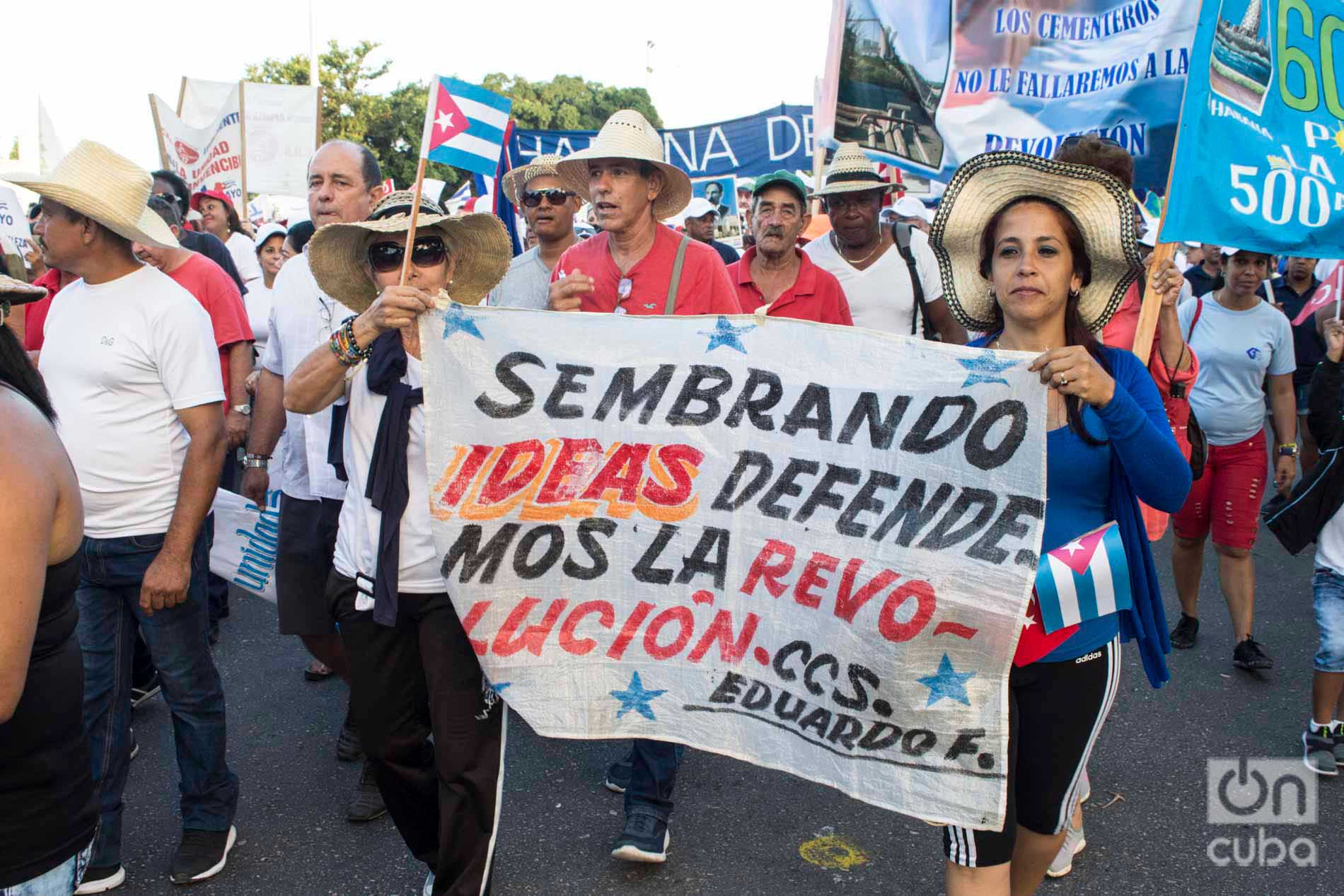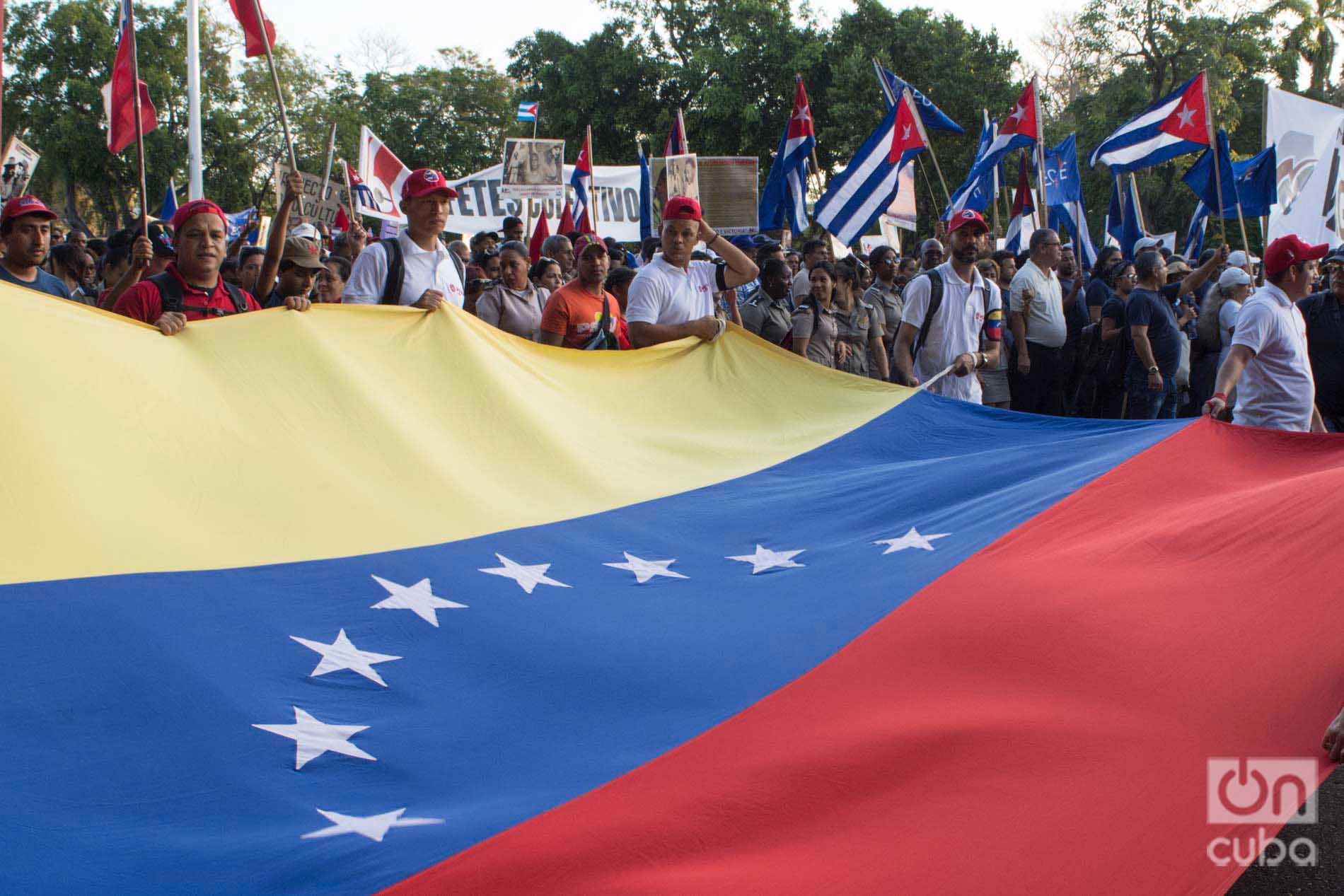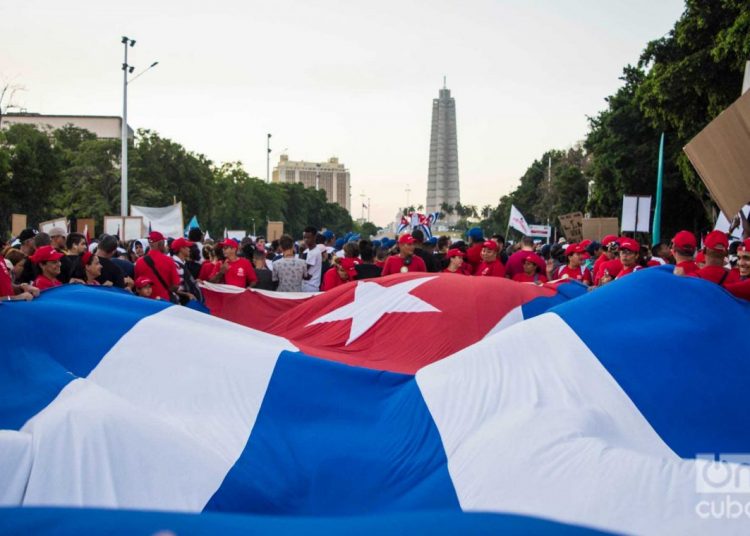Thousands of people marched throughout Cuba this Wednesday in the traditional May Day parade, which condemned the Trump administration’s recent sanctions and threats against the island.
The celebration of International Workers Day again had Havana’s José Martí Revolution Square as the main scenario, where “hundreds of thousands of Habaneros” paraded holding flags and signs, according to reports in the state media.
In the capital, the rally was presided over by the current president, Miguel Díaz-Canel, and the former president and still leader of the Communist Party of Cuba, Raúl Castro; while more than 1,000 foreign guests from union and solidarity organizations from a hundred countries marched with the Cubans.
From the early hours of the morning, participants began to move to the places planned for the pre-parade concentration, which began at 7:00 a.m. and lasted about two hours.
Unlike other years, there was no speaker at the beginning, and in its place the speech made 19 years ago by the late leader Fidel Castro, in which he defined the concept of Revolution, which is continuously cited in Cuba, was reproduced through the amplification system.

“Unity, commitment and victory” was read on the banner that led the massive march, led by workers from the Cuban health sector, and in whose first rows were the doctors who returned from Brazil after the island withdrew its collaborators from the South American nation after ultra-rightist President Jair Bolsonaro came to power.
Representatives of the LGTBI community, which in recent years has achieved greater acceptance and visibility on the island, were also present along with student, labor and social groups.
The parade was inspired by the voices of broadcasters through huge loudspeakers placed on the street and broadcast live on national television. Banners with slogans in support of the Revolution, against U.S. sanctions, flags and signs identifying work centers marked the march, which had replicas throughout the country.
International Workers Day was celebrated at a time marked by the strengthening of U.S. sanctions, which were repeatedly mentioned and criticized by the broadcasters. “We don’t agree with the Helms-Burton” and “no foreign or extraterritorial law will decide in our country,” were some of the phrases heard through the loudspeakers.
Trump’s adviser, John Bolton, announced this month the limiting of remittances that can be sent to Cuba from the United States to “1,000 dollars per person per quarter” and the State Department confirmed that it is studying the elimination of some of the categories that allow Americans to travel legally to the Island.
In addition, as of this Thursday, Washington will allow claims in U.S. courts against multinational companies operating on plots of land or property expropriated after the 1959 Revolution, which further toughens the embargo and threatens to discourage foreign investment.
Moreover, President Donald Trump threatened Cuba this Tuesday with a “full and complete” embargo and deepening sanctions at the highest level if the island does not withdraw its alleged military forces from Venezuela, whose presence Havana denies.
Precisely, slogans in favor of the government of Nicolás Maduro, Cuba’s main partner in the region, and in rejection of the “failed coup d’état” this Tuesday, were also heard during the parade.

Parallel to the central rally in Havana, in the rest of the island Cubans also took to the streets on May Day with parades in the main cities. The eastern Santiago de Cuba had the second biggest rally, which was headed by José Ramón Machado, second secretary of the Cuban Communist Party.
EFE / AP / OnCuba











































